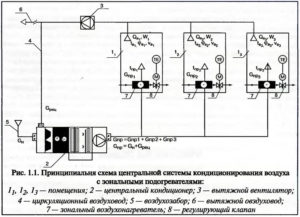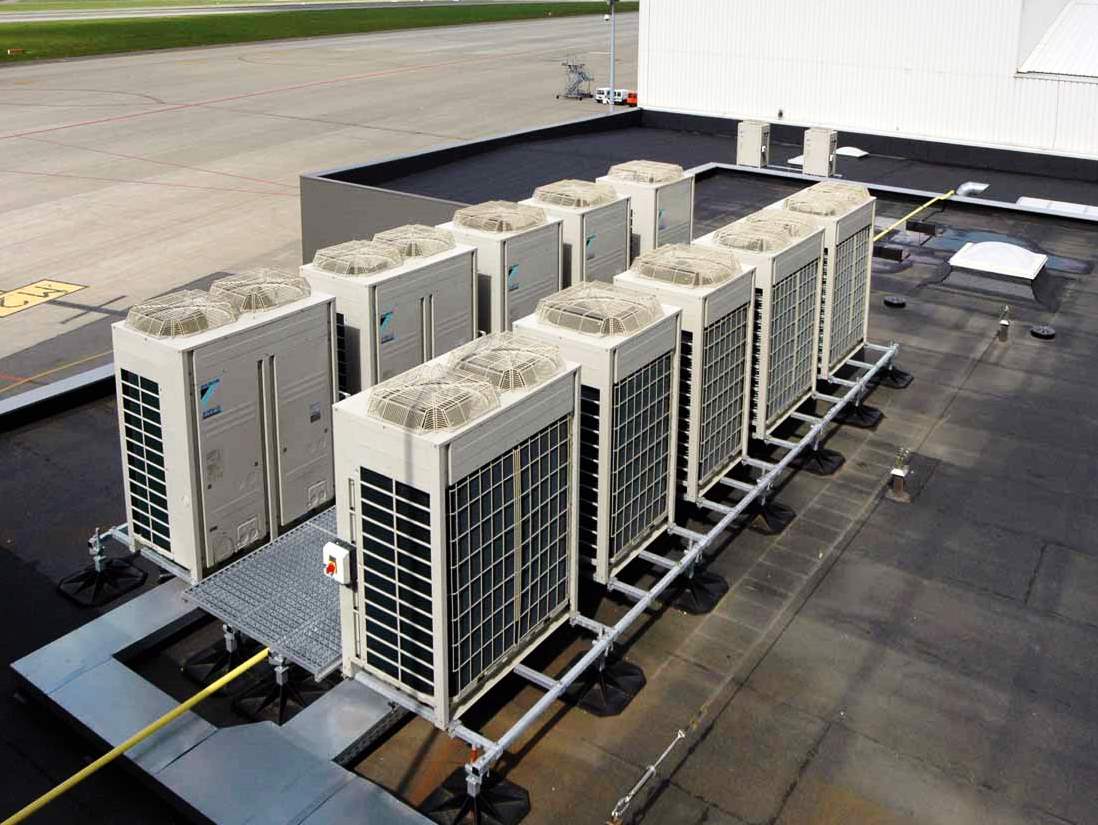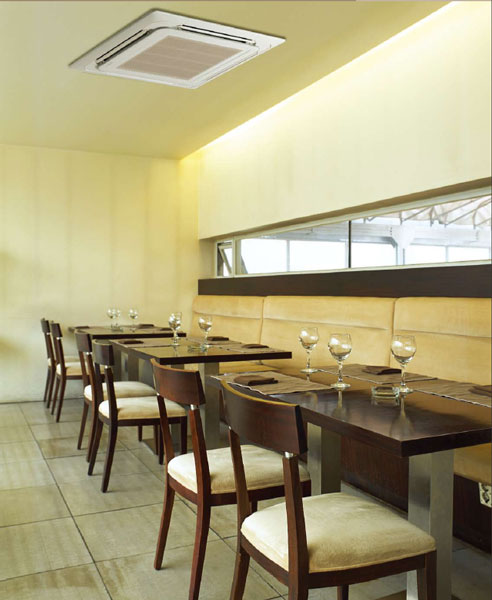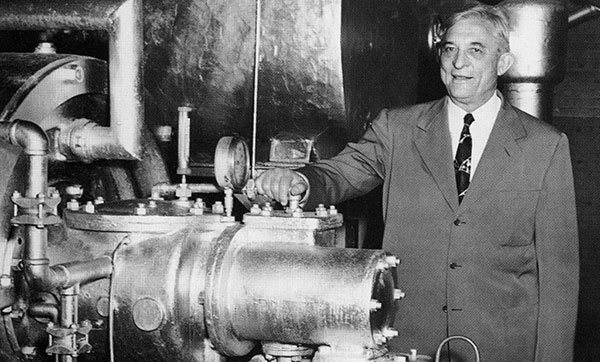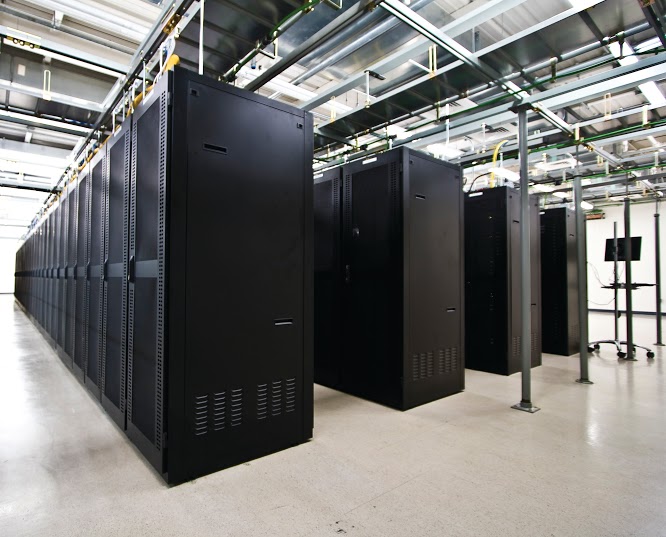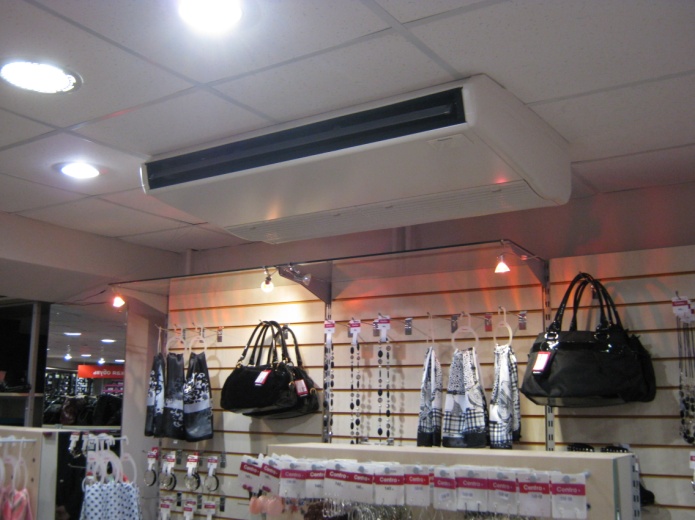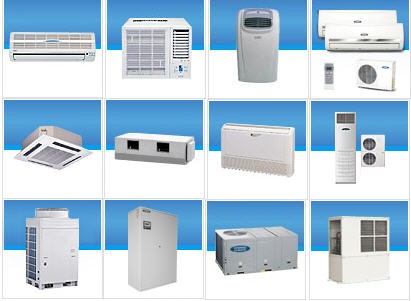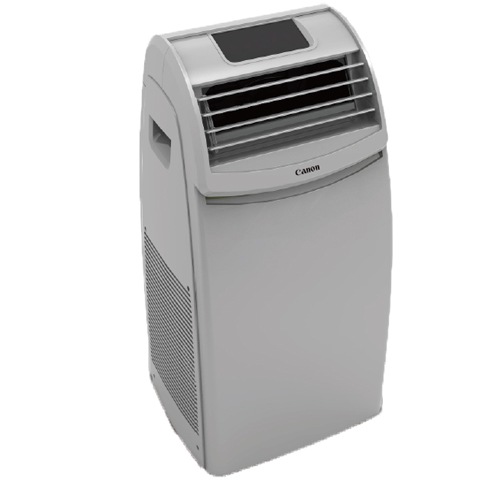The central air conditioner is the main part of the climate system that regulates the air parameters in large rooms. They are installed to maintain comfortable conditions in offices, indoor stadiums, production halls, hotels. The centralized air conditioning system provides fresh air to every room. The final regulation of the microclimate is carried out by fan coil units (analogs of the indoor unit of the split system).
The principle of operation of the climatic unit
- The central air conditioner is a multi-section unit that provides air intake and preparation.
- Chiller is a refrigeration unit that lowers the temperature of the refrigerant (water, glycol mixture).
- Fan coil unit is a heat exchanger installed in rooms for heating or cooling.
- Duct system - used to move air masses.
The principle of operation of the central air conditioner:
- Functioning fans draw outside air into the system.
- Cleaning is carried out by filtering devices, removing up to 90% of contamination and impurities.
- The prepared air mass is humidified or dried to the specified parameters.
- The conditioned air is directed to the serviced premises through a branched air duct system.
- A central air conditioner with recirculation mixes supply and extract air in different proportions. The combination reduces energy consumption for outdoor air treatment.
The air conditioning system is controlled by an automatic control panel located on the wall. Microprocessors control temperature setting, change of modes, fan speed, compressor operation.
System design
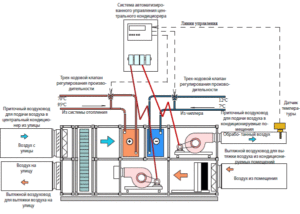
- Fan section. Purpose - to ensure the intake of atmospheric air and supply to the conditioned areas. The devices are of the centrifugal type.
- Cooling section. A heat exchanger consisting of copper tubes through which water or freon circulates. In the first case, the external source of cold is a chiller. When freon is used as a refrigerant, the module is connected to the condensing unit.
- Filtration section. The function of the module is to clean the injected air. The air conditioner uses two groups of filters: primary and secondary. At the initial stage, it is cleaned with devices of the EU1-EU3 class, removing up to 60% of dust. The second stage is the use of EU5-EU6 fine filters, which retain 90% of pollution. The catching elements are mounted on a frame with a seal. Central air conditioning units are equipped with synthetic pleated, bag, absorption, deodorizing filters.
- Heating section. Structurally resembles a cooling module (consists of tubes). Complete with water, steam or electric heater.
- Humidification section. The module is a steam humidifier or spray chamber with a nozzle. The passing air is saturated with fine water suspension.A drop eliminator is installed after the section to prevent moisture from entering other parts of the equipment.
- Sound absorption section. To reduce the noise intensity, sound-absorbing plates are installed. They are made from several layers of mineral wool or fiberglass. The plates muffle the fans.
The dimensions of the installation and each section depend on the required capacity. Unit weight from 50 to 500 kg.
Features and Applications
The central air conditioner is non-autonomous, for the operation of the unit requires the supply of cold and heat from the outside. Its provision is carried out at the expense of water from the chiller, connection to the heating system (boiler). The climatic equipment serving shopping malls and industrial facilities is characterized by high productivity from 500 to 120 thousand cubic meters per hour. Powerful equipment is designed with energy efficiency in mind. Heat recovery allows you to increase the efficiency of the system. Air conditioners operate in conjunction with chillers or condensing units. The central air conditioner is designed for several rooms; if there is a lack of power, two units are installed.
Application area
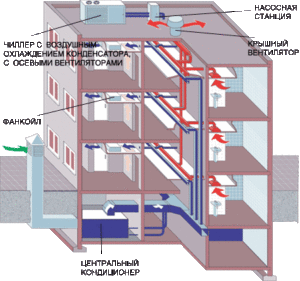
- office centers;
- medical institutions;
- concert halls;
- food production;
- pharmaceutical companies;
- shopping centers.
Advantages and disadvantages
Central air conditioners have a number of advantages over other types of climatic technology:
- A central unit that works for the entire building is cheaper than split systems in each room. Initial costs are compensated by a small consumption of electricity for the operation of the air conditioner.
- Installation of long communication lines is allowed, while power losses are minimal.
- Maintenance and repair of one main unit of the air conditioning system takes less time and costs less.
- Air conditioners are installed in technical rooms or on the roof. They do not spoil the interior, do not take up space. The noise of the fans does not bother employees and visitors.
- The system is capable of cooling or heating large volumes of air.
- Central air conditioners are designed to solve a complex of problems. The equipment reduces temperature, heats, cleans, humidifies and distributes air masses.
disadvantages
- A complex installation scheme, requiring the installation of hoods, laying of air ducts.
- Significant dimensions require the allocation of space.
- High cost of equipment.
Varieties of central air conditioners
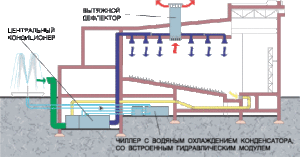
Depending on the internal arrangement, the units are divided into several types:
- Direct-flow. The system uses only outside air. Air conditioners are installed in buildings with increased air pollution with dust, toxic vapors, and microorganisms. The disadvantage of direct-flow equipment is the expenditure of large capacities for heating and cooling.
- Recirculating. A mixture of supply and extract air circulates through the channels. Recirculation can be full or partial. The air from the premises is cleaned, humidified or dried, and then sent back. The option is suitable for rooms that do not have hazardous emissions.
- Recovery equipment. Air conditioners use the heat of the extract air to partially heat the outdoor air. In special heat exchangers (recuperators), temperature is exchanged or air masses are mixed. The system provides less energy consumption.
Central air conditioners are an efficient and reliable version of climate control equipment. Their average cost is 200-250 thousand rubles. When servicing buildings with many rooms, these costs are justified.

